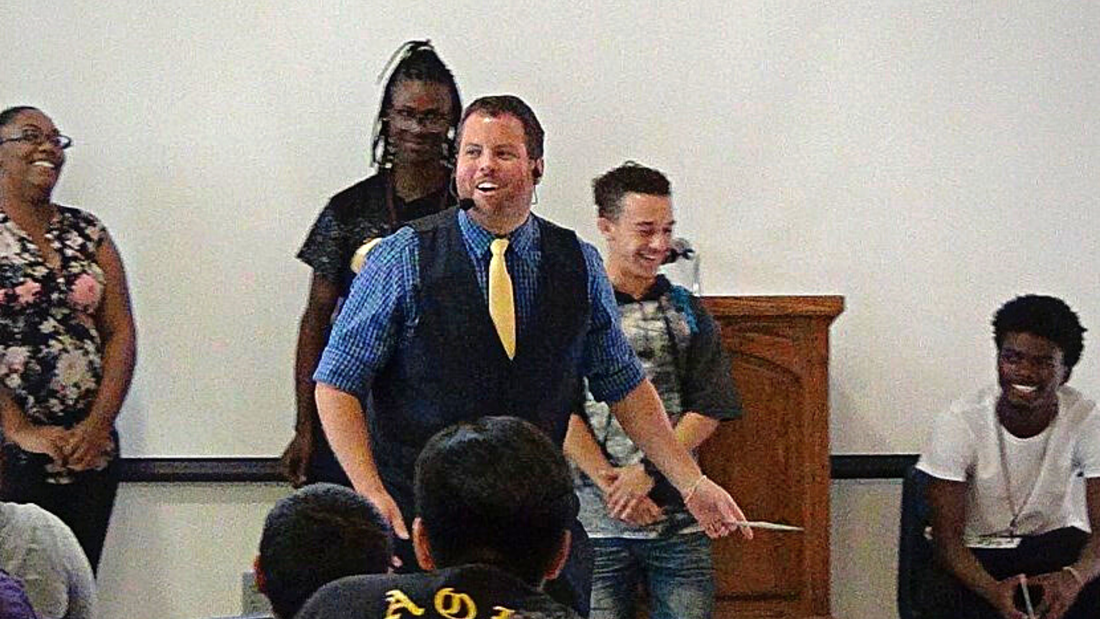|
What story are you telling?
Read the full story ⬇︎
"That was just what I hoped for!” she exclaimed, firmly shaking my hand. “You gave us time to rethink what we do with a fresh outlook. This was the perfect segue for the rest of our conference!”
Nancy had booked me to deliver the keynote address, so her praise came as affirmation of a job well done! I was still basking in the afterglow the following day when I received an email from her, which reminded me that “all glory is fleeting.” She shared feedback from the conference attendees, and they weren’t the words I wanted to read:
It was like a dagger to the heart. To be fair, the overall feedback was quite positive, yet even the positive feedback revealed an uncomfortable truth. Though regarded as entertaining, no one responded that the presentation was both memorable and meaningful—the hallmark of a truly empowering experience that can transfer well beyond the stage. Worthy Goals
Laughter and applause can be worthy goals in the right circumstances, but in my work as a keynote speaker and workshop facilitator, laughter and applause are at best interesting stops along the way to aid engagement. At worst, they can be distractions from the primary goal.
In Growing in the Art of Magic, Eugene Burger reminds us to “look at the reaction we’ve been getting and ask ourselves whether that’s the reaction we want. And if it isn’t, how can we change to get the reaction we do want?” In that spirit, rather than being discouraged, I used this feedback to grow, to discover what could be changed to have a more empowering impact for the people I serve. What Story Are You Telling?
At the Magic & Mystery School, Jeff McBride teaches that everything you say tells a story. The question is, what story are you telling? And is it the story you want to tell?
This teaching is in harmony with a dynamic line from the movie Walk the Line: “You can't help nobody if you can’t tell them the right story.” Being intentional with our words empowers us to deliver the right message with a throughline that can genuinely help people—because in the end, they may forget what we said, but they will remember how we made them feel through the meaningful stories we share. The 5 C’s of Empowering Stories
When applying effective storytelling techniques, there are five key components that have been most effective for my work. Whether writing a script for my show or a story for my blog, I ensure each story reflects each of these five components: context, conflict, choice, consequence, and connection.
1. Context: Context identifies the characters and puts them in a specific time and place, preparing the audience to understand the emerging conflict that sets the story in motion.
2. Conflict: Avner the Eccentric teaches that “everything can be seen as a problem to be solved, a knot to be unraveled.” Conflict is interesting because, when you “pull the string tight,” it creates tension between obstacles and desires, motivating the audience to lean further into the story.
3. Choice: The choices a character makes is an opportunity for the audience to see their own reflection and glimpses of their potential.
4. Consequence: The law of cause and effect reveals that everything happens for a reason—the consequences for how characters choose to respond to conflict.
5. Connection: Making clear connections within your story ensures it is equally memorable and meaningful, which is defined as relevant: relevant for your audience, for your message, and for you. In our search for meaning, rhetoric theory aligns relevance with pathos, logos, and ethos:
In the book Story Dash, David Hutchens explains that “you can't trust your audience has landed on the conclusion you wanted,” which is why explicitly weaving answers to these questions within your stories is crucial for helping people connect with the message.
Final Thoughts
Even before your performance has ended, your audience will have forgotten most of what you said, but when you “pull the string” of your throughline tight, you empower them with an experience that can transfer well beyond the stage.
The storyteller Robert McKee reminds us that “stories are the creative conversion of life itself into a more powerful, clearer, more meaningful experience,” and since applying these five storytelling components to my work, I have consistently created far more meaningful experiences for the people I serve:
Laughter and applause can be worthy goals, but for me, the best “applause” is empowering audiences to be positively changed as a result of the experience—because that kind of glory is never fleeting. Reflection
How might you use these ideas to create memorable and meaningful experiences that empower your audience?
Want More? Jonas Cain is an author, magician, and facilitator of fascination. Through his company, Hashtag Positivity, he helps individuals, teams, and communities experience abiding joy by mindfully transitioning through change. Questions or comments? Email him at [email protected]
0 Comments
Leave a Reply. |
AuthorJonas Cain, M.Ed. is a storyteller, magician, musician, and facilitator of fascination on a mission to help you experience abiding joy. Topics
All
SubscribeArchives
July 2024
|



















 RSS Feed
RSS Feed
